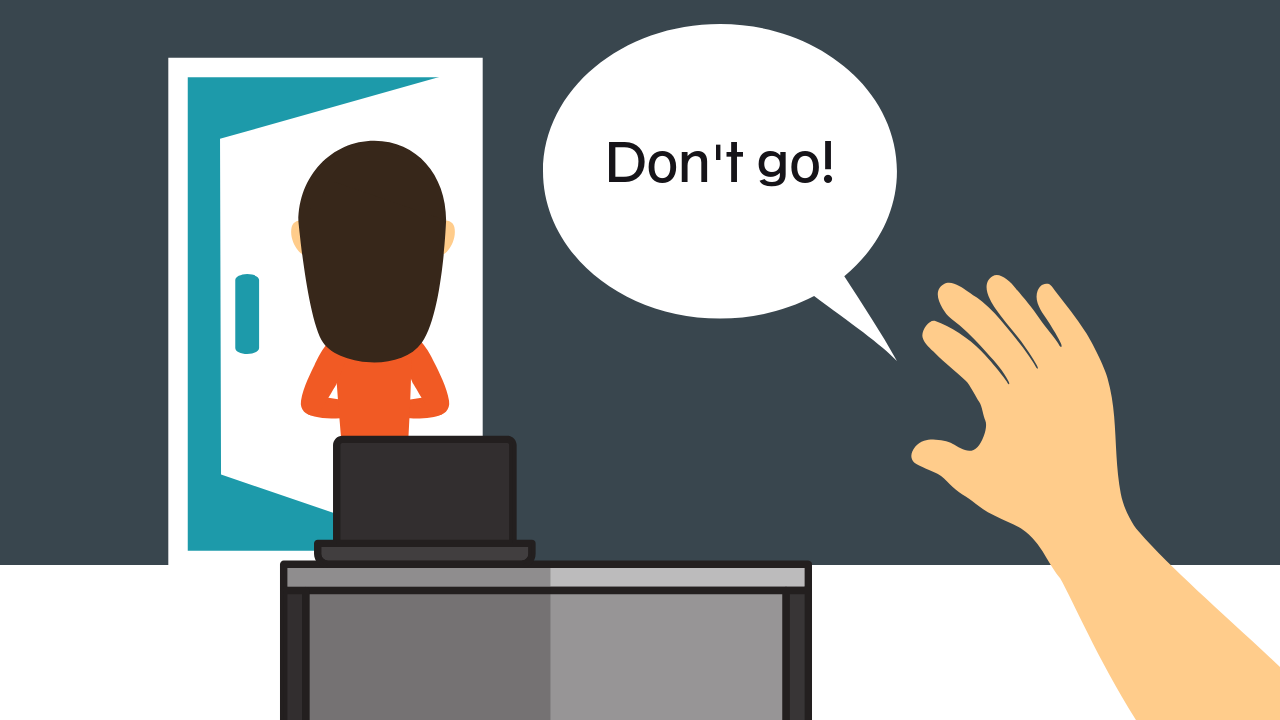1 min read
How Do You Use Feedback to Provide a Better Customer Experience?
How does feedback play a part in providing a better customer experience? Why is this question itself important? It isn't that getting customer...
I know what I am looking for, and would like to chat.
A team of data-driven marketers obsessed with generating revenue for our clients.
Because the proof is in the pudding.
At Campaign Creators we live by three principles: Autonomy, Mastery, Purpose.
6 min read
![]() Tammy Duggan-Herd
:
7/30/18 2:31 PM
Tammy Duggan-Herd
:
7/30/18 2:31 PM

Customer experience (CX for short) consists of the sum of interactions between a customer and a business throughout their relationship, including before, during, and after the purchase of a product or service. The central goal for companies is to increase both quantity and quality—the lifespan of the relationship and customer feedback it receives.
A customer experience strategy accordingly refers to the actions taken to create and execute a positive customer experience. Vision-building, research, data analysis, and testing are some examples of important CX strategy components. As such, it is an integral part of a broader Customer Relationship Management (CRM) strategy.
Creating a strong CX strategy has a range of advantages, including: streamlining the efforts of a company’s marketing and sales teams, establishing a positive feedback loop of insight into customer satisfaction, enabling technology to be updated in ways relevant to ever-changing needs, and helping to minimize churn.
As customer demands shift and evolve, more aggressive demands have emerged for more personalized experiences across a growing number of channels. The path to success for companies for businesses is through innovation and focus on inbound methodology.
Salesforce found in recent research that nearly 65 percent of marketing leaders believe their team is leading CX initiatives. With a strong emphasis on brand experience, marketing is a go-to for developing CX because it plays a major role in delivering the brand to customers, as well as understanding and communicating customer needs to other departments.
That being said, marketing teams cannot go it alone-- a marketer’s success in customer experience today requires top-notch teamwork with the sales and service teams. Breaking down the “silos” that prevent the formation of a unified CX strategy should be at the top of the to-do list for any business struggling to get ahead.
While the approach to fleshing out a customer experience strategy will vary for every company depending on set goals and needs, there are some key building blocks which are universally applicable to the process.
The first step in a CX campaign is to become informed about your customers, and the best way to do this is through in-depth research. It is important to draw upon both quantitative and qualitative data, from customer surveys to web analytics. Devoting attention to personas and segments is crucial for gaining better understanding of the variety of needs of your customers.
Some helpful metrics to consider researching may include:
Additional research should be conducted on your industry and competitors. Remember, however, that is important to remain innovative and unique rather than blindly following the exact CX models used by other companies-- one-size-fits-all is never a recommendable approach.
Once your customer data has been collected and analyzed, and several personas have been created for the customer base, it is time to establish customer journey maps. A customer journey map is a representation of the “journey” that a customer typically undergoes with a company’s brand, products/services and team. They are informed by your personas, which are used to uniquely detail its constituents’ current customer experience.
The main advantage of this map is that it visually organizes the key touch points between the customer and the company. (It may be a good idea to begin by reviewing the buyer’s journey and the marketing funnel.) Elements such as emotional responses, expressed needs, and pain points can also be included.
Drawing out customer journey maps provides insight into potential customer decision-making scenarios, allowing companies to better understand the factors that influence customers’ purchase decisions. In short, mapping builds a common internal view of the customer experience and exposes possible gaps in your current strategy.
Defined objectives are the core of CX strategy, but it is necessary to take existing processes and tools at the company’s disposal into mind when realistically creating these. Take the time to evaluate your strategic priorities, the motivations and intended results of investing more into your CX in the first place. The brand promises that will be made to future customers are also a consideration.
Document all components, from people to technology to budget, to identify where the greatest strengths and weaknesses lay. With the right information at hand, it will be easy to begin asking-- and answering-- the right questions. Significant topics to cover may include:
With research conducted and goals set, you can finally spring into action. It is recommendable to create a CX roadmap to serve as a guideline throughout the implementation process, outlining the planned tactics that will be utilized across customer experience channels together with the previously determined objectives and metrics.
At the heart of the strategy you should incorporate a Customer Experience Management (CEM) program, which will design, manage, and track customer interactions at all of the crucial touch points. Coordinating tasks among your team will make the process of experience management smoother, as will making use of technology.
The top tools relevant to CX will include self-service, live chat, mobile support, social support, and possibly omnichannel support via a singular integrated platform. An example of this is a CRM software, such as the HubSpot CRM.
To determine whether your CX strategy is effective as well as what improvements need to be made and where, you must wield the strongest metrics and KPIs possible. Some of these may be reused, perhaps with slight modification, from the research process in step 1; others will focus on growth or change over the period of implementation.
For that matter, change is a crucial theme in any type of marketing strategy, and certainly one of inspection as it applies to CX. Your longer-term analysis, cycling back into the research phase of the process, should provide an overview of the shifting state of the market and the competitive landscape of your industry.
This can include changing technology, average churn rates, consumer attitudes, and more. Continuously finding the gaps between the performance of your company and that of the leaders in your field will keep your CX strategy one step ahead of the competition.
In addition to these steps, there are some brief best practices to keep in mind when seeking out ways to continue tweaking and optimizing your strategy.
Making a customer experience memorable, rather than simply passable, often requires an element of uniqueness. As such, your brand voice can play a powerful role in every part of your strategy, from reflecting your company’s values to the tone in which you deliver customer service and the content on your site. The little, personal details matter in delivering brand consistency and solidifying customer delight.
Outstanding customer support and service begins making your company outreach-friendly. Customers want to feel attended to by a human being, not a robot-- an increasingly rarer experience in the age of automation. This begins with determining the channels on which your customers are most active so as to provide reliable service on them.
Alternatively, self-service is an option which gives customers the ability to service themselves without having to reach out for help. An up-to-date knowledge base or an FAQ section on your site are great examples of a self-help resource. Look into customers’ most typical pain points, and you will have the tools necessary to anticipate their queries.
A “customer first” mindset may seem straightforward enough to follow, but implementing it in areas such as site design can become confusing when trying to understand what customers want. Outside of asking them directly, of course, there’s a good general rule of thumb: consumers seek convenience.
Saving time and energy are two of the top priorities every company should have when planning a CX strategy. Whether it be the checkout page, cross-selling email promotions, or live customer service, the question to always keep in mind is, “how can this process be made more convenient for the customer?”
It is no secret both in and outside of the marketing world that emotions drive decisions. Emotional attachment has been proven to build customer loyalty; a company that prioritizes emotional connection outperforms its competitors by 85% in sales growth.
In addition, emotionally engaged consumers are about three times more likely to recommend your product or service and to re-purchase. The conclusion? Aim for friendliness and authenticity in all customer interactions to create an engaging positive experience.
You can't create a successful customer experience strategy without first creating your buyer personas. Get our How To Create Buyer Personas Workbook for a solid foundation for your CX.

1 min read
How does feedback play a part in providing a better customer experience? Why is this question itself important? It isn't that getting customer...

1 min read
Customer churn, also known as customer attrition, occurs when a business loses a customer. In a product-based business, say selling men's razors,...

Effortless and personalized customer interactions are the gold standard for businesses striving to stand out in a crowded market. But what’s the...